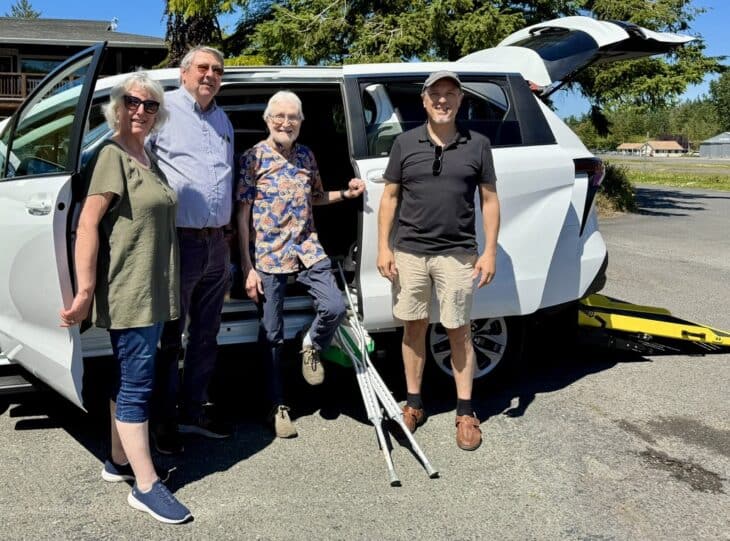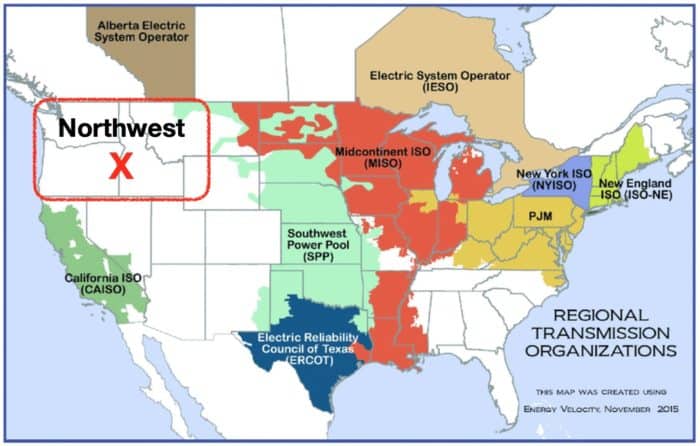OPALCO Hears from Members at Town Hall Meetings: A Recap
Thank you to the members who joined us at a series of Town Hall meetings in March. A total of 83 members attended the meetings (San Juan: 43, Orcas: 23, Lopez: 17). A Town Hall meeting on Shaw Island is scheduled for May (date TBD). We had very positive and productive conversations; board members, staff and members all benefited from the opportunity to talk face to face. Board President Chris Thomerson gave a presentation covering Energy, Energy Savings and Broadband (slides available at www.opalco.com/about/news/) and then opened the meetings up for questions and conversation. For those who couldn’t make the Town Hall meetings, here is a recap with links to our website for further reading.
Energy: OPALCO’s Core Business. Over the past three years, energy (purchase of power, operation of the electrical distribution system) represents 94% of OPALCO’s budget. In discussing energy, the Board emphasized safety as the top priority and discussed the lineman injury in 2013. The changing power supply landscape was also discussed. Thomerson said, “While maintaining relations with Bonneville Power Adminstration (BPA), leadership is exploring alternate power suppliers to counter
Tier 2 (market) rates—and to anticipate our generation sources post 2028 when our current contract with BPA ends.” Members wanted to know if new sources of generation would be renewable. General Manger Randy J. Cornelius answered, “We will look to serve the membership with the cleanest, low-cost power we can find. Renewables are very attractive to us, but we will have to purchase whatever resources are available to meet the needs of our members.” Foster Hildreth, Assistant General Manager explained that we are working with regional cooperative utility groups such as the Pacific Northwest Generating Cooperative and Northwest Rural Utlities to explore joint acquisition ventures that give us greater access to resources as the end of BPA contract approaches.
Power Grid Control Backbone. To date, OPALCO has $3.45 million invested in our grid control backbone ($3.3 million in Utility Plant plus $120K in BPA submarine cable fiber leases) on the balance sheet (www.opalco.com/about/finances/). These costs are allocated to the entire membership—just like a submarine that connects the system between two islands is covered by all—and every member benefits from cost efficiencies and greater risk mitigation that the system provides. Previously, we would send two linemen in a boat to an outer island to investigate and resolve an outage—often in the dark of night during dangerous storm conditions. Today, through our grid control (or communications) backbone, a lineman or engineer can most often diagnose the fault, reroute and/or restore power from the SCADA (Supervisory Control and Data Acquisition) display from a safe distance.
OPALCO continues to expand our backbone to improve safety and connect electric field devices and plans to expend another $7.5 million over the next four years to meet system, safety and evolving needs on the electric side. Thomerson clarified that the Co-op continues to pursue the purchase of a wireless (700MHz) licensed spectrum for our network, but is still in negotiations. The spectrum would “become another powerful tool in our grid control backbone toolbox,” said Hildreth “and help us to solve critical gaps in field communication and safety for first responders county-wide.”
Co-op Finances. The Board answered questions from the membership Co-op finances. Thomerson said, “We run a tight ship. OPALCO consistently ranks in the very top of our industry in rigorous audits and independent reviews.” He explained the checks and balances process for the review of the Co-op’s financial health, operations and maintenance, capital projects, acccounting and controls through Moss Adams and the USDA-Rural Utilities Services. The Co-op’s financial statements are available online (www.opalco.com/about/finances/), and are published quarterly in board packets. The upcoming annual report will publish the 2012-2013 Combined Balance Sheets and Statements of Operations.
Energy Savings. Thomerson showed charts (www.opalco.com/about/news/) that demonstrate how OPALCO values energy savings (energy efficiency and conservation) and local distributed (renewable) power as resources for meeting our energy needs now and in the future. General Manager Randy J. Cornelius talked about the Co-op’s partnership with non-profit organizations, led by the San Juan Islands Conservation District, to increase outreach, education and member participation in these areas. This partnership will also promote and manage OPALCO’s community solar initiative, giving members an opportunity to own a share of a local solar generator, which will be located on Co-op property. Learn more at www.opalco.com/energy-services and also sanjuanislandscd.org/energy/ and stay tuned for upcoming Energy Fairs this May and June.
Island Network: Broadband. Many in attendance at the Town Hall meetings were most interested in broadband, and how OPALCO will make our member-owned backbone available to the membership. Thomerson gave the history of Island Network, a division of OPALCO formed in 2004 to share our co-op infrastructure with members—and introduced John Graminski, the new Manager of Information Services. Island Network has $426,272 on the balance sheet, listed as “Non-Utility Property” (www.opalco.com/about/finances/). There are currently 28 members in 54 locations connected to our backbone through Island Network including three Internet Service Providers (ISPs), NoaNet (schools, libraries, etc.), public safety agencies and local businesses.
A local ISP complained that Island Network costs were too high. Every Island Network connection pays for itself; costs will come down as more members connect. Graminski is conducting a cost of service study to create updated pricing and a business plan for all Island Network members, including ISPs. Per the Board directive in November (www.opalco.com/about/finances/), the moratorium on new connections has been lifted and a handful of new services are being connected in population centers (Eastsound, Lopez Village, Friday Harbor) where capacity and fiber connection points are currently available.
New connections are made just like the electric side: members pay the cost to bring the infrastructure to their location, and then a monthly subscription fee. New connections will be based on member demand; this is a ‘pull’ not a ‘push’ situation. We expect to transition to a new business plan in early 2015; members who want to connect now can request new service through our website (www.opalco.com/island-network). Island Network staff will respond with an estimate for cost of connection, if service is available in your area; or, if not, a timeline for when to expect it. Maps of the preliminary plans for expansion are included on the website (www.opalco.com/island-network).
Members on Lopez asked if wireless technologies will be deployed through Island Network. Thomerson answered, “If we are successful in purchasing the licensed spectrum as a platform for safety and field communications, we will make that ‘tool’ available as a wireless connection through Island Network—which will greatly expand the reach and bring costs down, compared to fiber.” Board member Vince Dauciunas explained that his neighborhood is already organizing to share the cost of bringing an Island Network connection to their remote Roche Harbor area homes.
It is challenging to get the attention of our 11,000 members. We encourage you to engage with us throughout the year: read the bill inserts and e-bill messages, attend our annual meeting on Saturday, May 3rd, read the annual report (online in mid-April), subscribe to our email newsletter, the Co-op Connector and our Energy Savings blog, Sharing the Load, visit us at the County Fair and attend informational meetings on your island as they are offered.



